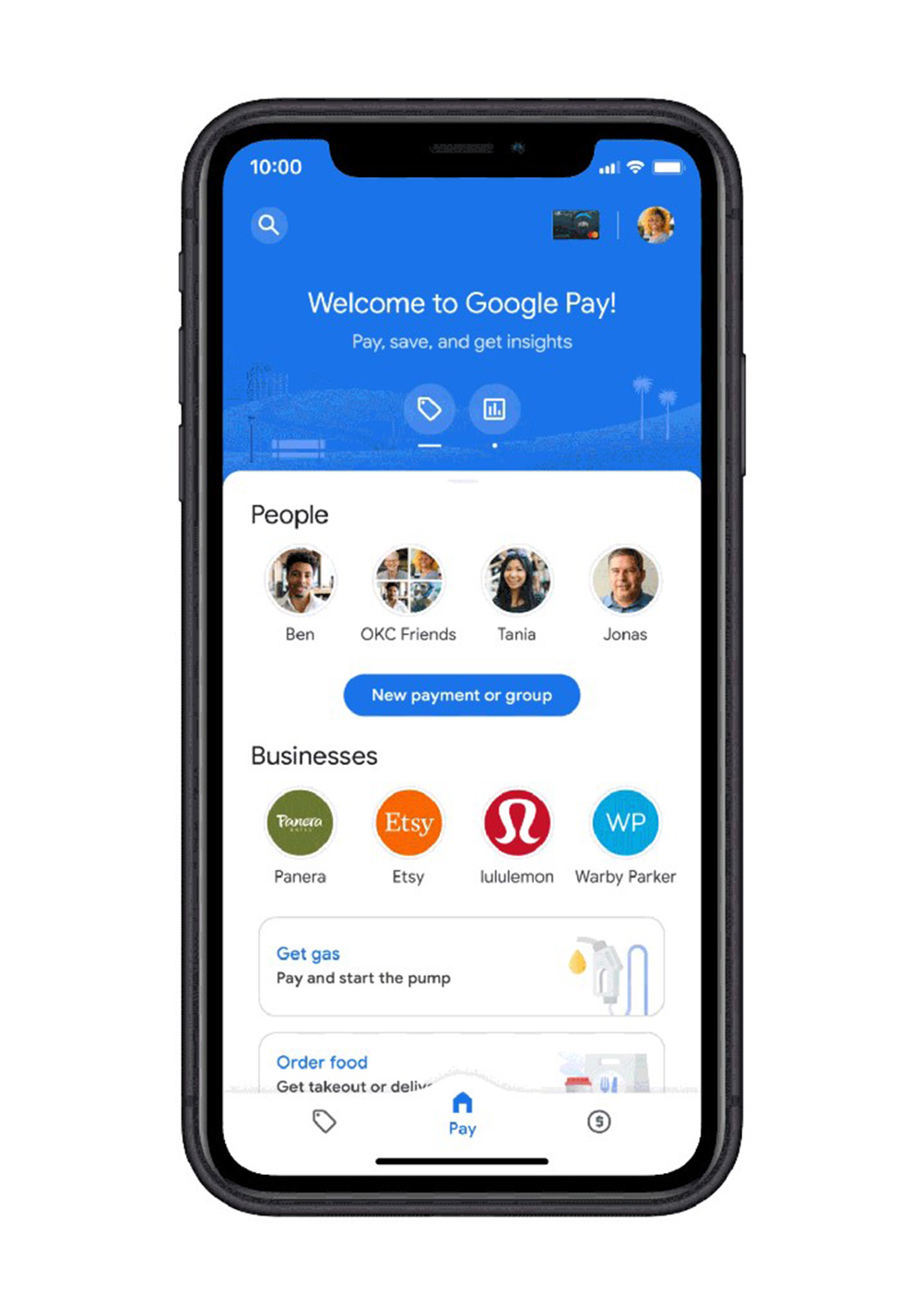谷歌(Google)在11月18日下午發布了改版后的美國版Google Pay,將打造一站式個人理財平臺和手機支付應用程序。
這款新應用程序圍繞“關系”進行重新設計,將人們交往最頻繁的好友和企業作為設計的核心。改版后的新功能包括支持多人分攤費用的群組支付;匯總支出情況的財務“洞察”,幫助用戶管理資金;綜合了獎勵積分、會員卡和交易的商戶頁面。
另外,谷歌還公布了最新手機銀行產品Plex的11家銀行合作伙伴,并在11月18日發布了Plex的候選合作伙伴名單。除了已知的合作伙伴花旗集團(Citi)和斯坦福聯邦信用社(Stanford Federal Credit Union)以外,Bank Mobile、西班牙對外銀行(BBVA)和BMO Harris等銀行也將與谷歌合作,從明年開始為用戶提供費用更低的數字支票和儲蓄賬戶。
谷歌的支付業務負責人凱撒·森古普塔說:“我們對產品進行重新設計恰逢其時,但2020年也讓這件事情變得非常緊迫。一方面,數字支付顯然在飛速增長。另外一個原因是,面對人類歷史上最嚴重的經濟和財政危機,我們認為我們的技術可以在一些小的方面給人們帶來幫助。”

谷歌的其他銀行合作伙伴包括海岸社區銀行(Coastal Community Bank)、第一獨立銀行(First Independence Bank)、綠點公司(Green Dot)、西雅圖銀行(Seattle Bank)、SEFCU和馬里蘭州港口銀行(Harbor Bank of Maryland)等。
谷歌最初于2018年1月發布Google Pay,主要是為了方便信用卡、會員卡、交通卡等各種卡片支付。這款應用程序綜合了谷歌之前的兩款金融科技應用程序:點對點支付服務谷歌錢包(Google Wallet,約2011年)和實現了手機“無接觸”支付的Android Pay(約2015年)。
森古普塔表示:“我們在五年前設計這款應用程序,主要圍繞的使用案例是用卡片支付的問題。從我們發布Android Pay以來,世界已經發生了翻天覆地的變化。移動支付變得更普遍。”
最新版Google Pay增加了知名品牌的返現獎勵和折扣,包括漢堡王(Burger King)、REI Co-op和塔吉特(Target)等。另外,這款應用程序還支持在超過10萬家餐廳訂餐,可在包括奧斯丁、波士頓和華盛頓特區在內的400多個城市支付停車費,還可以在3萬多個加油站加油,包括殼牌(Shell)、埃克森美孚(Exxon Mobil)、Phillips 66、76和康菲石油(Conoco)等。
谷歌在一篇博客中開玩笑說:“更多方便的支付方式即將到來。”
Google Pay美國產品管理總監約什·伍德沃德向《財富》雜志演示了部分新功能。他演示了更智能的搜索功能,通過搜索“上周的墨西哥美食”可以顯示在一家墨西哥餐廳最近進行的交易。他還從Gmail和谷歌照片(Google Photos)賬號中找出了包含“襯衫”字樣的收據圖片。

谷歌表示將對用戶的財務信息保密。森古普塔解釋說:“我們絕不會把用戶信息出售給第三方,也不會將信息分享給谷歌的其他部門用于定向營銷。這是我們的堅定承諾。”(當然,需要注意的是,如果您與零售商和商戶交易,加入他們的忠誠計劃并領取獎勵,您已經默認同意將您的個人數據提供給他們。)
這款應用程序的限制極其嚴格,因此如果沒有獲得用戶的明確許可,Google Pay不會使用用戶的交易記錄為用戶提供個性化的體驗。人們可以試運行個性化功能三個月,再決定是否同意這種功能。
目前,Google Pay支持30多個國家,每月用戶超過1.5億。重新設計的應用程序現在已經能夠在安卓(Android)和蘋果(Apple)手機上下載。森古普塔補充說,未來公司將在新加坡、印度等其他地區陸續推出這些功能。(財富中文網)
譯者:劉進龍
審校:汪皓
谷歌(Google)在11月18日下午發布了改版后的美國版Google Pay,將打造一站式個人理財平臺和手機支付應用程序。
這款新應用程序圍繞“關系”進行重新設計,將人們交往最頻繁的好友和企業作為設計的核心。改版后的新功能包括支持多人分攤費用的群組支付;匯總支出情況的財務“洞察”,幫助用戶管理資金;綜合了獎勵積分、會員卡和交易的商戶頁面。
另外,谷歌還公布了最新手機銀行產品Plex的11家銀行合作伙伴,并在11月18日發布了Plex的候選合作伙伴名單。除了已知的合作伙伴花旗集團(Citi)和斯坦福聯邦信用社(Stanford Federal Credit Union)以外,Bank Mobile、西班牙對外銀行(BBVA)和BMO Harris等銀行也將與谷歌合作,從明年開始為用戶提供費用更低的數字支票和儲蓄賬戶。
谷歌的支付業務負責人凱撒·森古普塔說:“我們對產品進行重新設計恰逢其時,但2020年也讓這件事情變得非常緊迫。一方面,數字支付顯然在飛速增長。另外一個原因是,面對人類歷史上最嚴重的經濟和財政危機,我們認為我們的技術可以在一些小的方面給人們帶來幫助。”
谷歌的其他銀行合作伙伴包括海岸社區銀行(Coastal Community Bank)、第一獨立銀行(First Independence Bank)、綠點公司(Green Dot)、西雅圖銀行(Seattle Bank)、SEFCU和馬里蘭州港口銀行(Harbor Bank of Maryland)等。
谷歌最初于2018年1月發布Google Pay,主要是為了方便信用卡、會員卡、交通卡等各種卡片支付。這款應用程序綜合了谷歌之前的兩款金融科技應用程序:點對點支付服務谷歌錢包(Google Wallet,約2011年)和實現了手機“無接觸”支付的Android Pay(約2015年)。
森古普塔表示:“我們在五年前設計這款應用程序,主要圍繞的使用案例是用卡片支付的問題。從我們發布Android Pay以來,世界已經發生了翻天覆地的變化。移動支付變得更普遍。”
最新版Google Pay增加了知名品牌的返現獎勵和折扣,包括漢堡王(Burger King)、REI Co-op和塔吉特(Target)等。另外,這款應用程序還支持在超過10萬家餐廳訂餐,可在包括奧斯丁、波士頓和華盛頓特區在內的400多個城市支付停車費,還可以在3萬多個加油站加油,包括殼牌(Shell)、埃克森美孚(Exxon Mobil)、Phillips 66、76和康菲石油(Conoco)等。
谷歌在一篇博客中開玩笑說:“更多方便的支付方式即將到來。”
Google Pay美國產品管理總監約什·伍德沃德向《財富》雜志演示了部分新功能。他演示了更智能的搜索功能,通過搜索“上周的墨西哥美食”可以顯示在一家墨西哥餐廳最近進行的交易。他還從Gmail和谷歌照片(Google Photos)賬號中找出了包含“襯衫”字樣的收據圖片。
谷歌表示將對用戶的財務信息保密。森古普塔解釋說:“我們絕不會把用戶信息出售給第三方,也不會將信息分享給谷歌的其他部門用于定向營銷。這是我們的堅定承諾。”(當然,需要注意的是,如果您與零售商和商戶交易,加入他們的忠誠計劃并領取獎勵,您已經默認同意將您的個人數據提供給他們。)
這款應用程序的限制極其嚴格,因此如果沒有獲得用戶的明確許可,Google Pay不會使用用戶的交易記錄為用戶提供個性化的體驗。人們可以試運行個性化功能三個月,再決定是否同意這種功能。
目前,Google Pay支持30多個國家,每月用戶超過1.5億。重新設計的應用程序現在已經能夠在安卓(Android)和蘋果(Apple)手機上下載。森古普塔補充說,未來公司將在新加坡、印度等其他地區陸續推出這些功能。(財富中文網)
譯者:劉進龍
審校:汪皓
Google released an overhauled U.S. version of its Google Pay app as a one-stop shop for personal finances and phone-based payments on November 18 afternoon.
The new app is redesigned around “relationships,” meaning it puts the friends and businesses people transact with most frequently front and center. New features include group payments, or the ability to split expenses among a number of individuals; financial “insights” that show spending summaries to help people manage their money; and merchant-specific pages that collate rewards offers, loyalty cards, and transactions into a unified view.
Google also revealed 11 bank partners for a new mobile banking product called Plex, a waitlist for which it made available on November 18. Banks including Bank Mobile, BBVA, and BMO Harris will join already known collaborators Citi and Stanford Federal Credit Union to offer people fee-less, digital checking and savings accounts starting next year.
“It was time for us to redesign the product, but 2020 also put a certain sense of urgency on it,” says Caesar Sengupta, Google’s head of payments. “Partly because digital payments have obviously increased dramatically. But also because, as you're looking at one of the worst economic and financial crises we've seen in our living history, this is a time when we feel our technology can be of use to people in some small way.”
Google’s other banking partners are Coastal Community Bank, First Independence Bank, Green Dot, Seattle Bank, SEFCU, and the Harbor Bank of Maryland.
When Google debuted Google Pay in January 2018, it primarily made paying with all variety of cards—credit, loyalty, transit—easier. The app joined together Google’s two earlier financial tech, or fintech, apps: Google Wallet (circa 2011), a peer-to-peer payment service, and Android Pay (circa 2015), which made “contact-less” payments possible from people’s phones.
“The current app, which we designed five years back, was very much built around the use case of a problem then, which was paying with cards,” Sengupta says. “The world has changed a lot since we launched Android Pay. It's much more mobile.”
The new Google Pay adds cash-back rewards and discounts from popular brands, such as Burger King, REI Co-op, and Target. The app adds integrations to order food at more than 100,000 restaurants, pay for parking in more than 400 cities, including Austin, Boston, and Washington, D.C., and purchase gas at more than 30,000 stations, including at Shell, Exxon Mobil, Phillips 66, 76, and Conoco.
“More easy ways to pay are coming soon,” Google teased in a blog post.
Josh Woodward, director of product management for Google Pay U.S., demoed some new features for Fortune. He showed off a smarter search function that surfaced recent transactions from a taco joint by searching “Mexican food from last week.” He also pulled up images of receipts containing the word “shirt,” collected from his Gmail and Google Photos accounts.
Google says it will keep people’s financial information private. “We're never going to sell your data to third parties, and we're not going to share it with the rest of Google for targeting,” Sengupta explains. “It’s a very clear, plain-speech commitment.” (Of course, note that if you transact with retailers and merchants, join their loyalty programs, and take up rewards, then you’re tacitly agreeing to give them your data.)
The app is so locked down that Google Pay won’t use people’s transaction history to personalize their app experience unless people explicitly grant it permission. People can test run the personalization feature for three months before deciding whether to green-light it.
Today, Google Pay is available in more than 30 countries, and it has more than 150 million monthly users. The redesigned app is now available on both Android and Apple phones. Sengupta adds the features will be rolled out to other regions, including Singapore and India, in the future.






